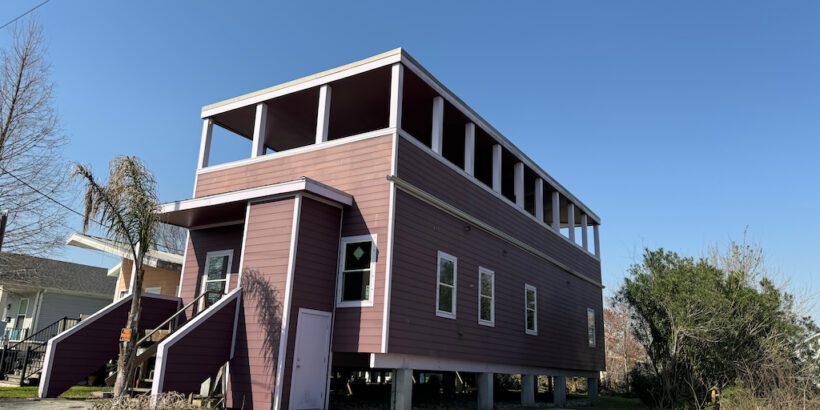On August 29, 2005, Hurricane Katrina made landfall just east of New Orleans and became one of the most deadly hurricanes to ever hit the U.S. and the costliest natural disaster in U.S. history.
The Lower Ninth Ward, particularly impacted during Hurricane Katrina, faced severe devastation as the levee wall along the Industrial Canal fractured in multiple sections. This breach resulted in a massive influx of water, even pushing a barge into the neighborhood.
This deluge of water flattened entire neighborhoods, erasing homes completely from their foundations and submerging the area in floodwaters for an extended period.
The Ninth Ward faced prolonged challenges as it was the last region in the city to have its power and water services reinstated. Additionally, it took considerable time to pump the area dry after the hurricane, leaving some parts under 12 feet of water for weeks.
After Katrina, only about 37% of households returned to this neighborhood, and since then, it has struggled to recover.
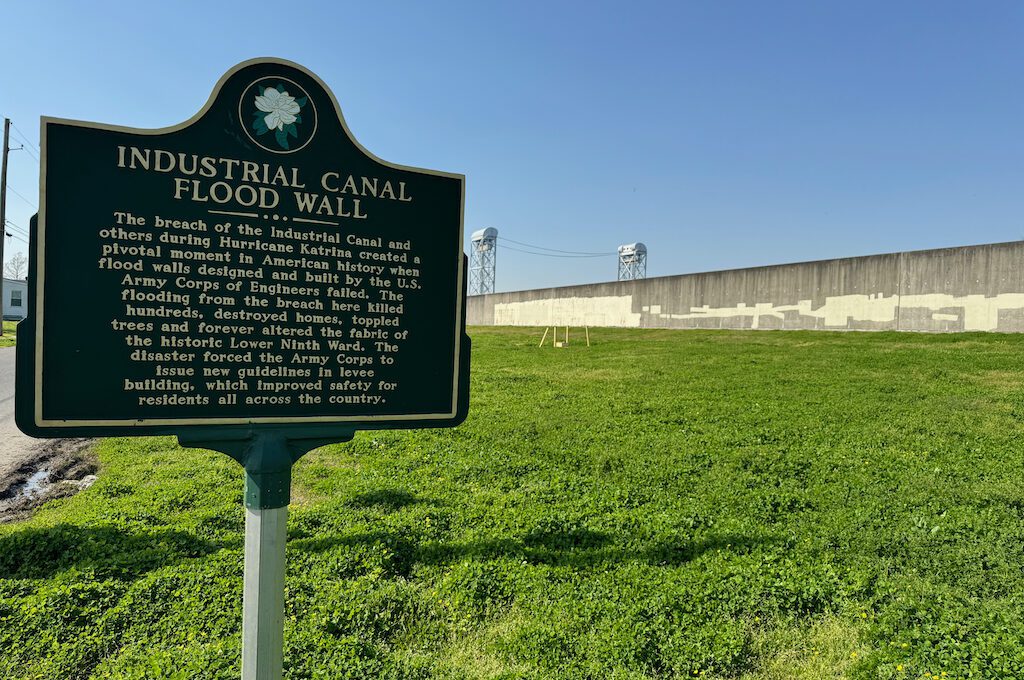
Various initiatives were launched to reconstruct the neighborhoods, and one notable endeavor took shape in 2007 when actor Brad Pitt founded the Make It Right Foundation. This foundation aimed to construct energy-efficient and affordable housing in the Lower Ninth Ward.
The nonprofit gained significant attention, especially in 2012 when celebrities such as Rihanna, Sheryl Crow, Seal, Kanye West, and Snoop Dogg participated in “A Night to Make It Right,” raising five million dollars.
Ultimately, over 100 homes were built through this effort, featuring stunning designs conceptualized by renowned architects like Frank Gehry, David Adjaye, and Shigeru Ban. These ecologically conscious houses incorporated solar panels and vibrant, futuristic designs that added a unique charm to the neighborhood. It said it cost around $250,000 to make each one and they sold for $150,000.
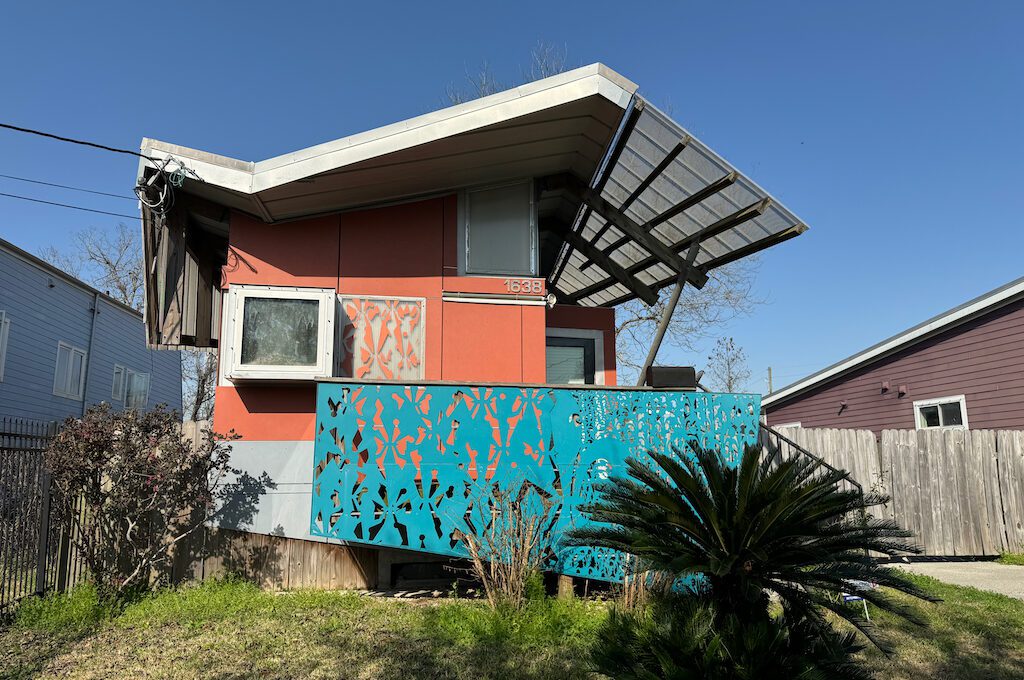
However, a significant challenge arose as these homes were constructed with numerous issues. Problems such as mold, rot, electrical fires, and structural concerns surfaced, rendering some of them uninhabitable. By 2022, a report indicated that only six out of the 109 houses were considered to be in reasonably good condition.
The emotional toll on Lower Ninth Ward residents can be imagined as they grappled with the task of rebuilding after Katrina had swept away everything, only to find themselves in homes with structural deficiencies.
Subsequently, in 2018, the culmination of these challenges led to a class-action lawsuit against the Make It Right Foundation and Brad Pitt.
After several years marked by lawsuits, countersuits, and negotiations, a resolution was reached in 2022. The settlement agreed upon awarded residents $20.5 million in damages aimed at restoring their homes.
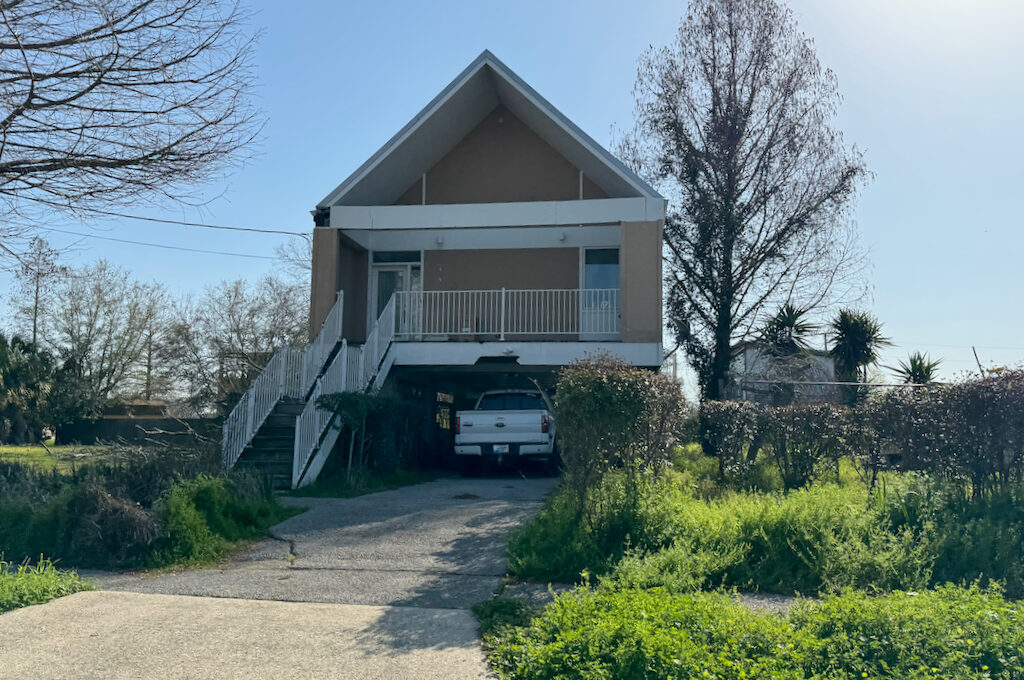
However, it appeared that the Make It Right Foundation lacked the financial resources to cover the settlement. As a solution, another nonprofit entity named Global Green entered the picture. Acting as a financial savior, Global Green stepped in and committed to paying the $20.5 million to fulfill the settlement.
The complication arose when it became apparent that Global Green did not have the immediate funds to cover the settlement. Although they agreed to fulfill the judgment, their plan involved doing so over an extended period.
They asserted that they had communicated from the outset that raising such a substantial amount would take considerable time. However, this message did not reach everyone, leading to a situation where the anticipated swift resolution was put on hold.
Global Green introduced an alternative strategy by initiating a GoFundMe campaign to secure $5 million. This approach aimed to maintain momentum in the short term while they worked on formulating a plan to raise the more substantial amount of $20 million.
It’s noted that at the inception of their GoFundMe campaign, they had already garnered $382,000. However, the progress toward the ultimate target doesn’t look promising, at least not for the GoFundMe campaign.
Once more, envision the challenging circumstances for individuals who lost their homes in 2005 and have grappled with the hardship of residing in homes that may not be fully habitable. They finally get told relief is around the corner only for it to be extended indefinitely….
The extent to which these issues have been addressed or partially resolved, as well as the current condition of these homes, remains uncertain to an outsider.
During our visit, many of the homes presented an appealing exterior, showcasing their beautiful designs. However, the external facade raises curiosity about the internal conditions of these houses and prompts contemplation about the ongoing challenges faced by residents.
Furthermore, it sparks inquiries into the accountability for the issues encountered.
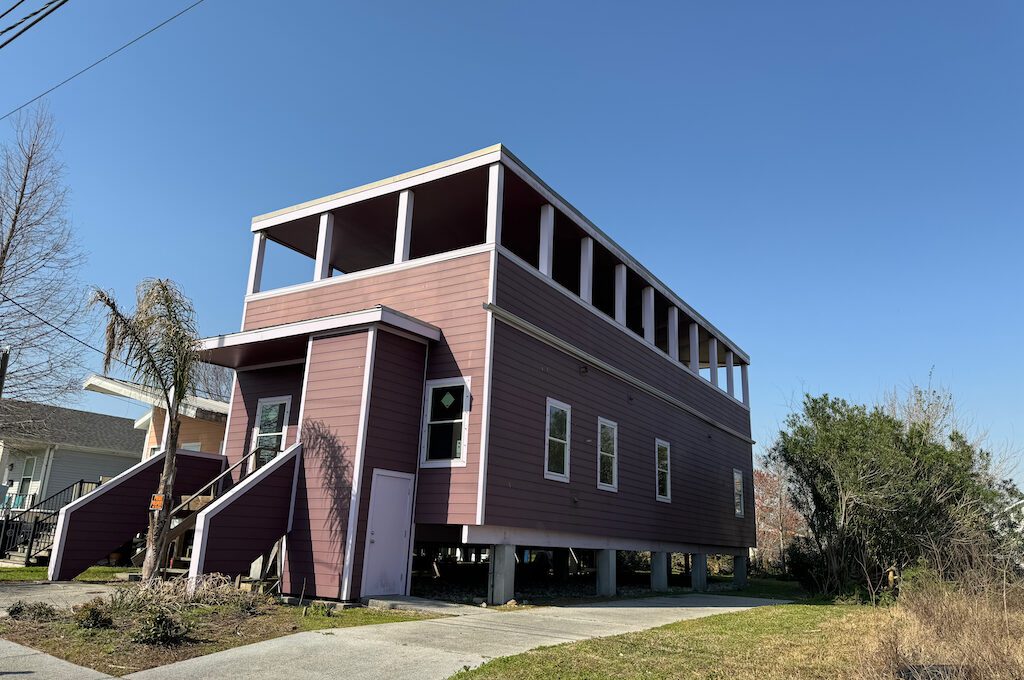
Various theories surround this matter as to why all of this happened.
One perspective suggests that Brad Pitt and his foundation may have aimed too ambitiously, attempting to accomplish too much in a short period. Constructing over 100 aesthetically pleasing and eco-friendly homes at affordable rates proved to be a challenging undertaking.
The climatic conditions in New Orleans, marked by high humidity and frequent rainfall, posed a significant hurdle. Building with specific materials becomes imperative in such an environment to prevent the pervasive growth of mold and rot.
As of 2024, the future outlook for the Lower Ninth Ward remains uncertain, with many lingering questions about the restoration of affected homes and the distribution of the raised $20 million. The fate of the Make It Right Foundation also hangs in the balance, raising questions about its continued operations and impact.
The ambiguity surrounding these issues underscores the complexity of post-disaster recovery efforts and the challenges faced by communities in rebuilding. The situation prompts reflection on the lessons to be learned about the balance between feel-good ambition and following through with commitment and execution.
Daniel Gillaspia is the Founder of UponArriving.com and the credit card app, WalletFlo. He is a former attorney turned travel expert covering destinations along with TSA, airline, and hotel policies. Since 2014, his content has been featured in publications such as National Geographic, Smithsonian Magazine, and CNBC. Read my bio.

